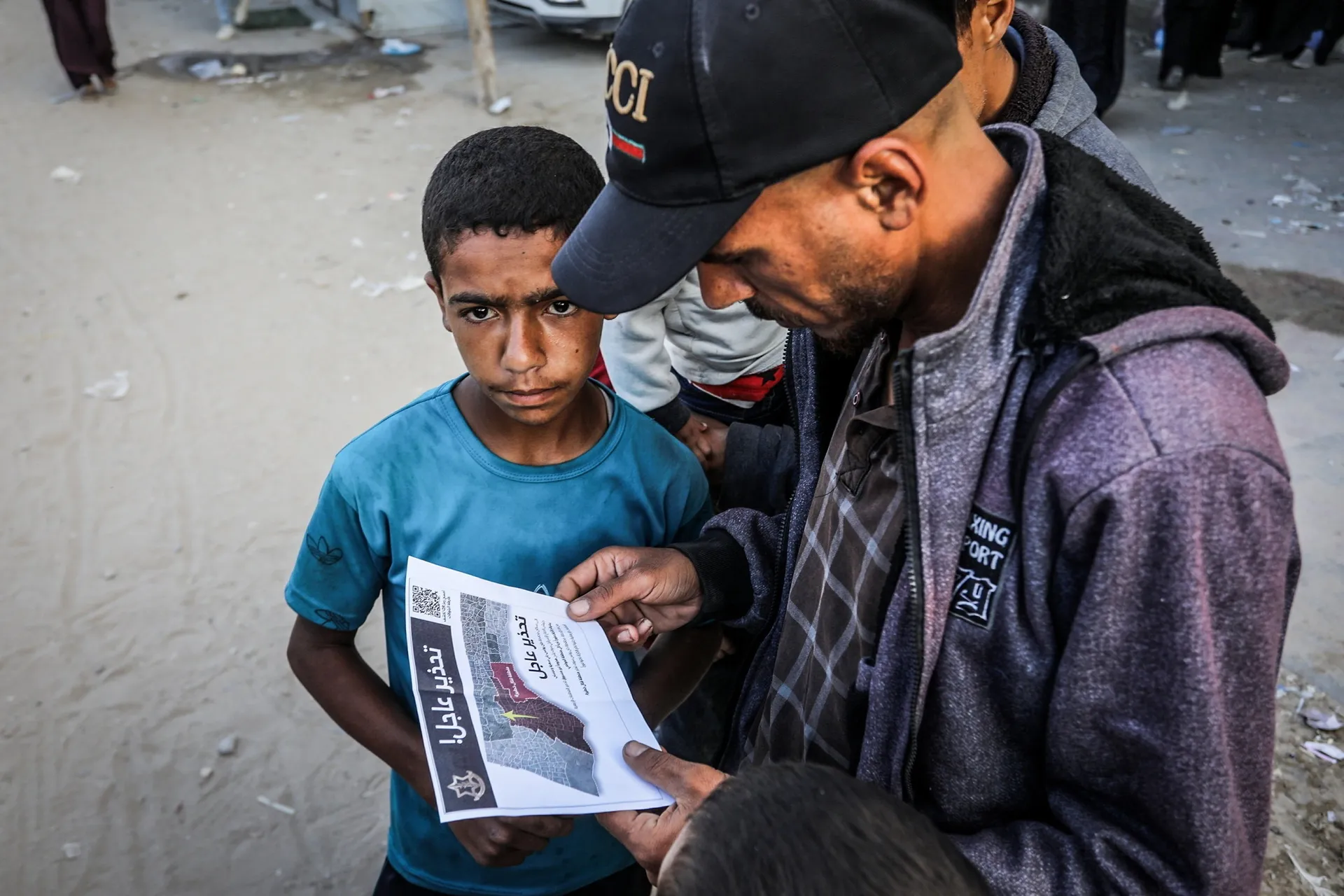The warnings to flee come suddenly: leaflets fluttering from the sky, text messages pinging thousands of phones, confusing maps on social media pointing out paths to more rubble and despair.
The Israeli military calls them evacuation orders, saying they are designed to keep civilians out of harm’s way. For Gaza’s 2.1mn people, they are the harbinger of suffering: displacement many times over, a desperate rush to gather children and the elderly, and then a slow, humiliating trudge to the next ruined corner of the besieged enclave.
The Financial Times analysed hundreds of these evacuation orders, including about 30 issued since Israel shattered a ceasefire with Hamas in March. Taken together they illustrate how Israel — which has authorised its military to occupy the entire enclave — has changed the shape of Gaza, leaving less and less land for Palestinians.
The FT found that more than four-fifths of Gaza — which was among the world’s most densely populated territories even before the war triggered by Hamas’s October 7 2023 attack — is now covered by Israeli military zones and evacuation orders.

But Israel is not done. Prime Minister Benjamin Netanyahu’s government has suggested it wants to corral the entire population into a tiny corner of southern Gaza along the border with Egypt, with the rest of the enclave off limits.
International observers have warned that forcing Gazans south in this way — into an arid, desert wasteland with no running water, electricity or even hospitals — amounts to ethnic cleansing. Palestinians fear it is a precursor to being expelled out of Gaza altogether.
“Within a few months . . . Gaza will be destroyed,” Bezalel Smotrich, Netanyahu’s far-right finance minister, told a conference in May. “The Gazan citizens will be concentrated in the south.”
Israel has already flattened much of northern Gaza. But for weeks now, Israeli troops have also been razing the area south of the Morag corridor. It is named after an Israeli settlement that existed between 1972 and 2005, when Israel withdrew from Gaza after decades of violent, expensive occupation.
What is left is devoid of the resources needed to sustain human life: the once thriving border town of Rafah is mostly rubble, the sandy ground around it treeless and bare. There is no fresh water or electricity.
For now, the Morag corridor separates the ruins of Rafah from another large city, Khan Younis, once considered a stronghold of Hamas, which Israel has also forced civilians to abandon.
Satellite images suggest that Israel is preparing the land south of the corridor for a longer-term presence. Swaths appear to have been cleared and prepared for what seem to be military outposts, protected by earth berms with vehicles parked nearby.
A map shared by the Israel Defense Forces shows that three aid-distribution points have been set up along the corridor as part of a controversial plan, rolled out in recent days, in which foreign mercenaries and Israeli soldiers oversee the handout of supplies.
The UN has warned that this is the precursor to mass displacement, as the concentration of distribution points along the corridor will force hungry families to abandon their land in the north and make the perilous journey south.
What awaits them is suffocating overcrowding, one of the densest concentrations of human beings in the world. Unlike in other heavily populated urban settings, such as the slums of South Asia, there is no sanitation and no running water.
By even the most generous calculations, each of Gaza’s war-weary civilians will have less physical space than a small room to survive.
When subtracting unusable land — taken up by rubble, marshes or roads and garbage dumps — the space left for each Palestinian could be even less. In the most dire calculations, it could be as little as a living room sofa.
This miserable, unsanitary and dangerous overcrowding is the publicly stated goal of finance minister Smotrich, who suggests it is a necessary step to achieve a long-cherished aim of Israel’s far right: forcing Palestinians out of Gaza for good.
“Understanding that there is no hope, and nothing to look for in Gaza”, he said, they would opt to leave and abandon their land to Israel. “They will be totally despairing.”
Additional graphics production by Gaku Ito and Ian Bott